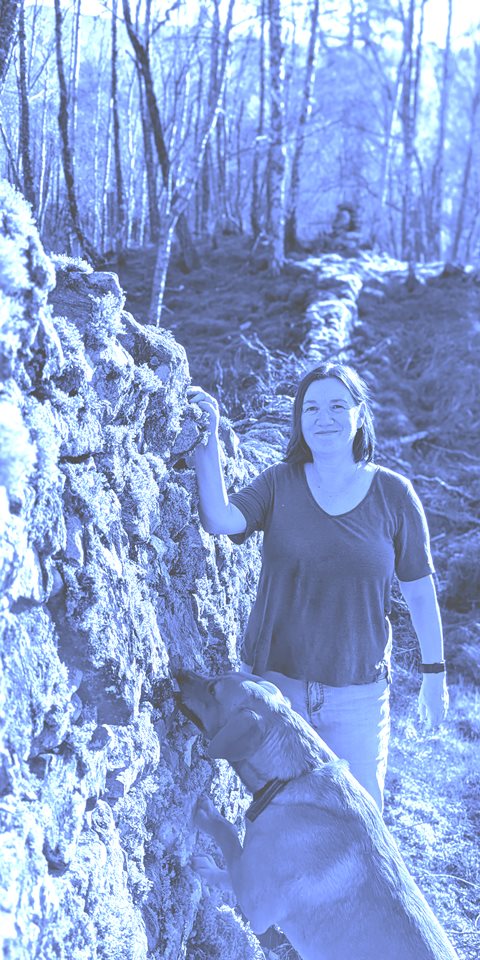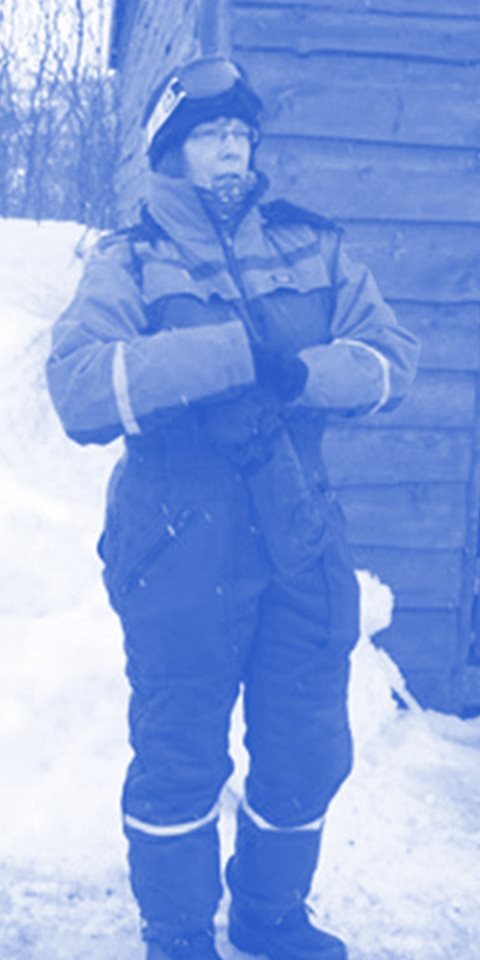RESEARCH BRIEF: 2021/22 survey update: spatial coverage achieved by the slaughterhouse-based antimicrobial resistance (AMR) sampling since 2017, as informed by sheep movement data
1. KEY MESSAGES
Estimates of the baseline frequency, of antimicrobial resistance (AMR) found in isolates of Escherichia coli from Scottish sheep faecal samples, obtained from the annual ovine slaughterhouse AMR surveys1, are unlikely to be directly comparable between each of the five surveys from 2017/18 to 2021/22 because the spatial origins of the samples differ.
For each survey, the catchment area of the single slaughterhouse that was used for the collection of sheep samples to be tested for evidence for antimicrobial resistance varied (Figure 1).
- The size of the catchment area increased; the 2020/21 & 2021/22 surveys cover the largest areas.
For each survey period, the coverage of the slaughterhouse’s catchment area that was sampled varied.
- The most extensive coverage occurred in the 2017/18 survey.
- The most restricted coverage was achieved in the 2020/21 survey.
- to use sheep movement data to provide an update of the coverage achieved in the ovine slaughterhouse AMR survey by comparison of the distribution of the sheep sampled in the five surveys from 2017/18 to 2021/22 2, 3, 4, 5.
- to use the outputs from Objective 1 to inform the interpretation of subsequent analyses of the data obtained from the surveys, further isolate usage, and any future sampling strategies.
Monitoring and surveillance of AMR - Further analysis of these data at a holding level will be necessary to investigate whether, or not, it is possible to determine if there are any trends in the frequency of AMR over time in the ovine population presented for slaughter in these surveys*.
Veterinary Surveillance: slaughterhouse-based survey design & interpretation - The current findings demonstrate that the potential for bias within the survey has been exacerbated over time, so the survey outputs are not directly comparable from year to year.
*This analysis will be done within the Strategic Research Programme 2022-2027, in project SRUC-A2-3: A systems understanding of the flow of AMR from livestock production to the environment and humans: informing antimicrobial stewardship and optimal use.
This is a routine post-survey re-evaluation of the coverage achieved and the potential for bias.
The survey is conducted at one slaughterhouse in Scotland. Survey design is described in 6.
In brief, we have assumed that the holding is the unit of analysis for sampling.
- A spatial unit (hexagon) that contains at least one holding that sent sheep to the slaughterhouse during the sampling period will be represented in the catchment area (denominator).
- A spatial unit that contains at least one holding from which a submitted sheep was sampled for the antibiotic sensitivity testing will be represented in the numerator data.
- The evaluation of whether a spatial unit has been adequately, under, or over sampled is estimated using a chi-squared test (see 5 for details).
There are some limitations with the ScotEID data:
- the sheep slaughter population cannot be stratified by age,
- the analyses presented are restricted to the final movements of Scottish sheep to slaughter in Great Britain and Scotland (see 5 for details), either from a sheep-holding direct to the slaughterhouse, or from a sheep-holding to the slaughterhouse via a market.
It is considered that, while resolution of these limitations would improve the utility of sheep movement data for surveillance purposes, they would not substantially alter the Key Message, nor the policy implications outlined above.
There are likely to be several factors that contribute to the variation seen in catchment area and coverage achieved. For further discussion and detail, please contact sue.tongue@sruc.ac.uk
This re-evaluation provides a basis on which to improve interpretations of the survey findings, and to monitor and – if necessary – adapt sampling strategies for future surveys. It builds on earlier evaluations reported in the Strategic Research Portfolio 2016-2021/227.

Figure 1: The catchment areas during the survey period for the single Scottish slaughterhouse and the coverage achieved in each of the five ovine AMR surveys between 2017 & 2021.
1. funded by Scottish Government’s Veterinary Advisory Programme (delivered by SRUC Veterinary Services) and Food Standards Scotland
2. Health Protection Scotland 2018. Scottish One Health Antimicrobial Use and Antimicrobial Resistance Report in 2017. https://www.hps.scot.nhs.uk/pubs/detail.aspx?id=3604
3. Health Protection Scotland 2019. Scottish One Health Antimicrobial Use and Antimicrobial Resistance Report in 2018. https://www.hps.scot.nhs.uk/web-resources-container/scottish-one-health-antimicrobial-use-and-antimicrobial-resistance-in-2018/
4. Health Protection Scotland 2020. Scottish One Health Antimicrobial Use and Antimicrobial Resistance Report in 2019. https://www.hps.scot.nhs.uk/web-resources-container/scottish-one-health-antimicrobial-use-and-antimicrobial-resistance-in-2019/
5 Antimicrobial resistance and Health-care associated infection (ARHAI) 2021.
https://www.nss.nhs.scot/publications/scottish-one-health-antimicrobial-use-and-antimicrobial-resistance-in-2020/
6. The use of sheep movement data to inform design and interpretation of slaughterhouse based surveillance activities https://www.frontiersin.org/articles/10.3389/fvets.2020.00205/abstract

